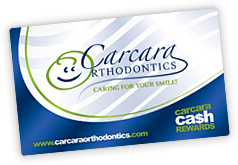What is so different about Damon® Smile braces?
June 17th, 2020

Damon Smile braces, with their self-ligating technique, have made the orthodontic treatment process more comfortable and faster than ever before. Damon Smile braces require elastic ties to hold the wires in place, which helps in alleviating pressure while your teeth move into their desired position. Therefore, both treatment time and follow-up visits to Carcara Orthodontics are reduced.
Damon Smile braces often times do not require the extraction of healthy teeth or other techniques to make space in your mouth before treatment begins. Traditional braces often require metal or elastic ties to hold wires together, typically resulting in a feeling of pressure and discomfort among the teeth while they are moving into an ideal position.
Damon Smile uses a technology called self-ligation, a process that eliminates the need for the ties and lessens the feeling of tightness during your treatment with Dr. Sal Carcara. Plus, Damon Smile braces use shape-memory wires that are able to move the teeth into position faster, ultimately cutting treatment time. Damon Smile braces also diminish the amount of food and debris that can become trapped along the brackets, allowing for more efficient teeth cleaning. Damon Smile braces are also available with clear brackets to lessen the visual impact and give you a more aesthetically pleasing smile during treatment.
Dr. Sal Carcara and our team at Carcara Orthodontics can meet with you to discuss all aspects of treatment. With this innovative technique, you can take advantage of many of the same benefits of traditional braces only with greater comfort, less self-consciousness, and in less time.
Please give us a call at our Westwood, NJ office for more information on Damon Smile, or to schedule an initial consultation with Dr. Sal Carcara.




